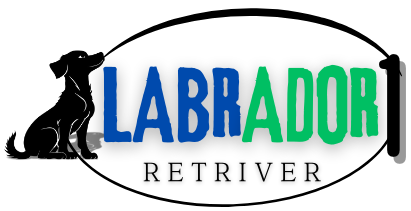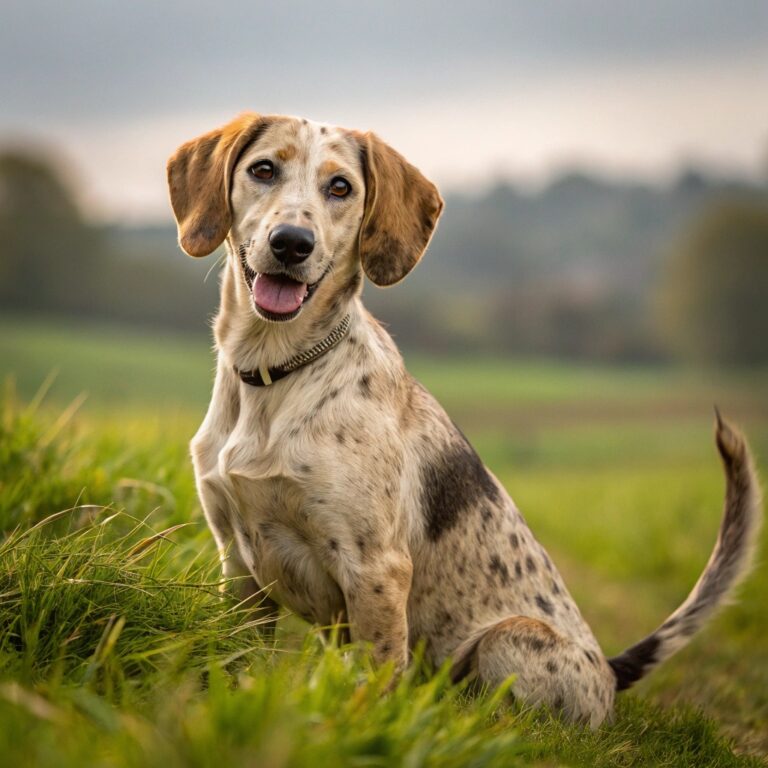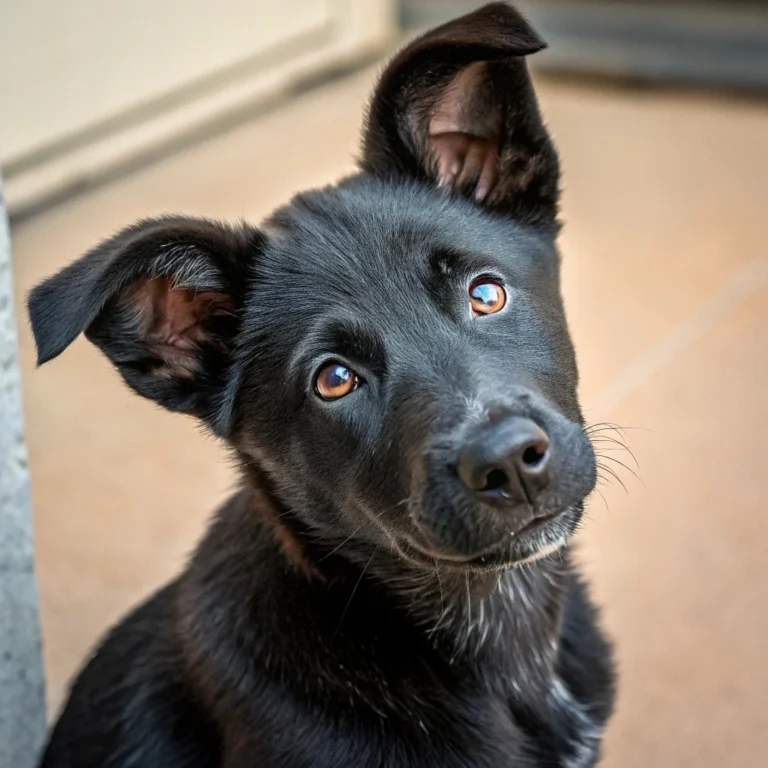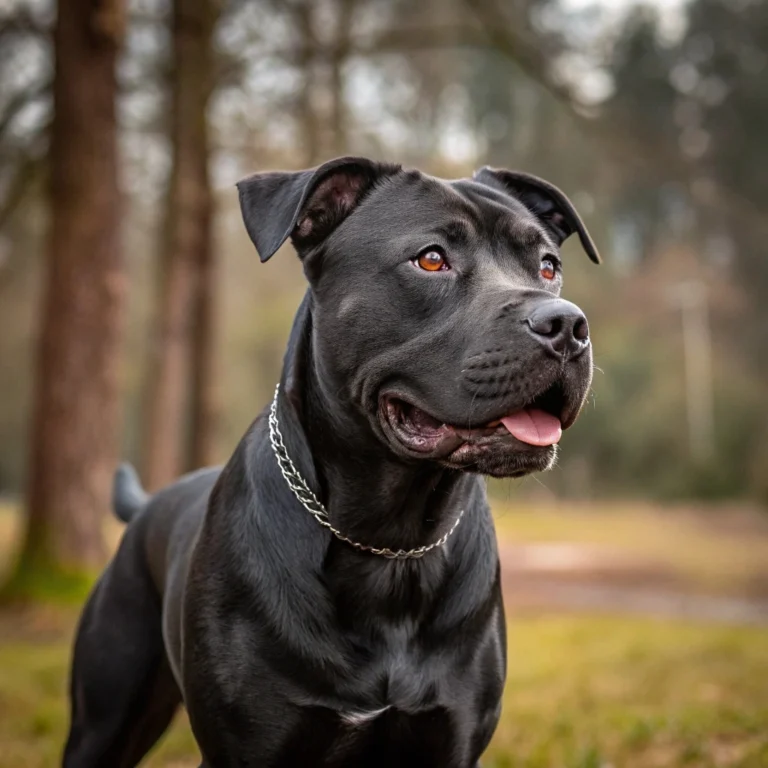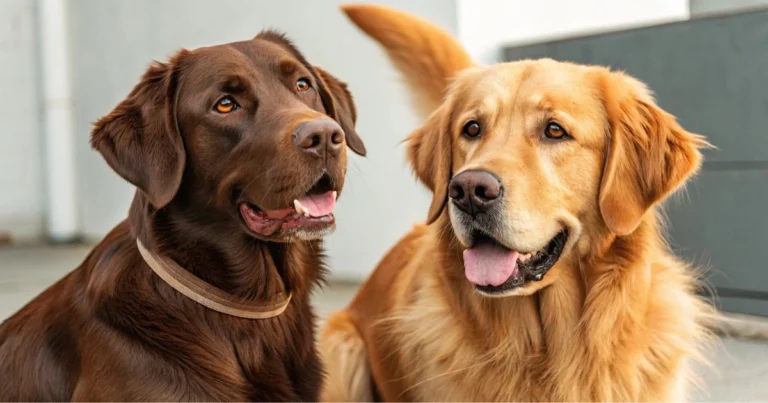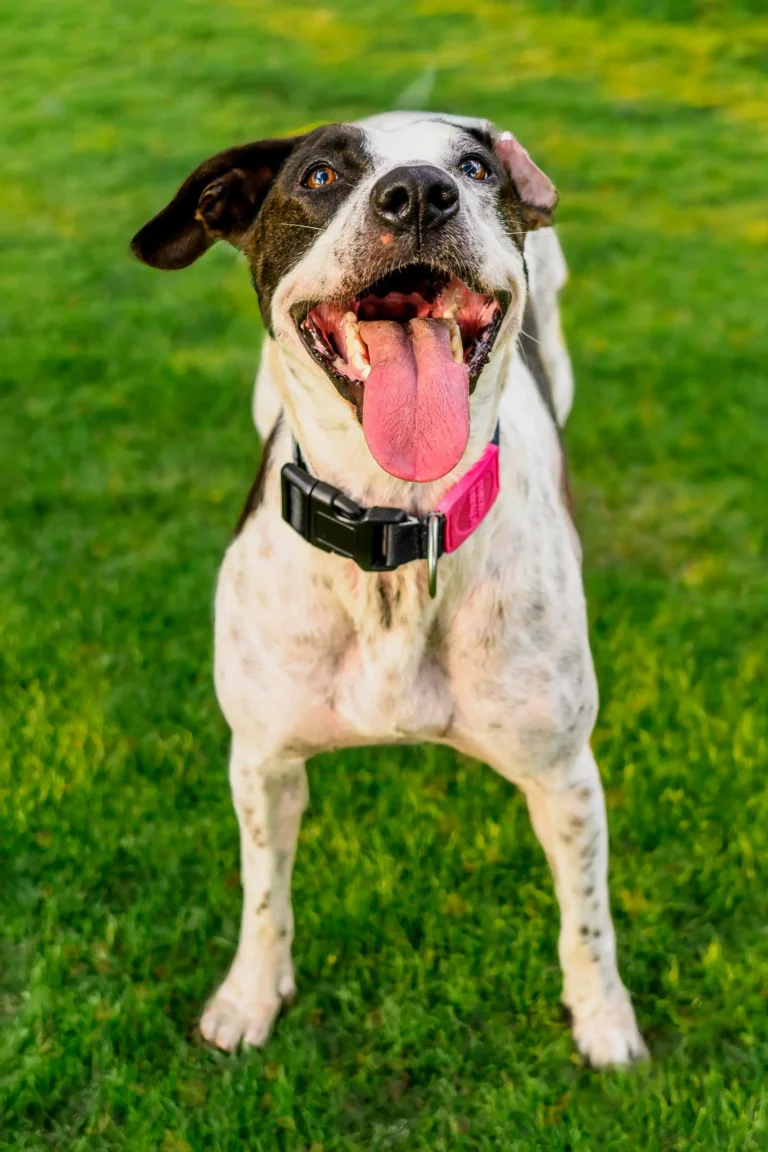Red Lab Care Tips
If you’ve ever locked eyes with a Red Lab, you know there’s something different about them. That deep, russet coat paired with those loving eyes isn’t just stunning—it’s soul-stirring. Bringing a Red Lab into your life means welcoming boundless energy, unwavering loyalty, and a whole lot of love. But as you’ve probably realized, owning one isn’t just about cuddles and games of fetch—it’s about commitment, care, and understanding what makes this unique pup thrive.
Let’s dive into everything you need to know to give your Red Lab the joyful, healthy life they deserve.
Table of Contents
Understanding the Red Lab Breed
Before you start planning daily routines and shopping for the best kibble, it helps to know what makes your Red Lab so special.
What Makes a Red Lab Unique?
The Red Lab, often referred to as a Fox Red Labrador, is technically a variation of the Yellow Labrador. This rich, reddish shade is simply a deeper pigmentation of the yellow coat gene. But the color isn’t the only standout quality.
Your Red Lab is:
- Highly intelligent and eager to please
- Energetic with a playful spirit
- Deeply affectionate and loyal
- Ideal for families, singles, and active lifestyles
Common Health Traits in Red Labs
Like their Labrador cousins, Red Labs are generally healthy but can be prone to:
- Hip and elbow dysplasia
- Obesity, especially if under-exercised
- Progressive retinal atrophy (PRA) affecting eyesight
- Skin allergies and ear infections due to their floppy ears
Pro tip: Choose breeders who test for genetic disorders and provide full health histories.
Nutrition and Diet Tips for Red Labs
Food isn’t just fuel for your Red Lab—it’s foundational to their vitality, coat health, and energy levels.
Best Foods for Red Labs
When choosing food, think quality over quantity. Your Red Lab thrives on:
- High-protein formulas (chicken, turkey, lamb, or salmon)
- Limited grains (opt for sweet potatoes or brown rice)
- Omega-3 and 6 fatty acids for joint and coat health
- Vitamin A, B-complex, E, and zinc
Avoid overly processed foods or fillers like corn and soy, which can trigger allergies.
Sample Weekly Meal Plan
Here’s a helpful weekly guide to keep your Red Lab happy and well-fed.
Table: Sample Red Lab Weekly Meal Schedule
| Day | Meal Type | Ingredients/Brand Suggestion |
|---|---|---|
| Monday | Breakfast | Chicken & Brown Rice Kibble + Fish Oil |
| Monday | Dinner | Homemade Beef Stew with Carrots & Peas |
| Tuesday | Breakfast | Salmon & Oatmeal Kibble + Omega-3 Supplement |
| Tuesday | Dinner | Turkey & Quinoa + Green Beans |
| Wednesday | Breakfast | Lamb-Based Dry Food + Vitamin Chew |
| Wednesday | Dinner | Chicken Broth Rice Bowl + Steamed Veggies |
| Thursday | Breakfast | High-Protein Kibble + Coconut Oil |
| Thursday | Dinner | Beef Liver Treat Mix & Sweet Potato Mash |
| Friday–Sunday | Repeat above with minor protein rotation and treats |
Don’t forget: Always give fresh water and monitor the weight of the puppy to prevent overfyring
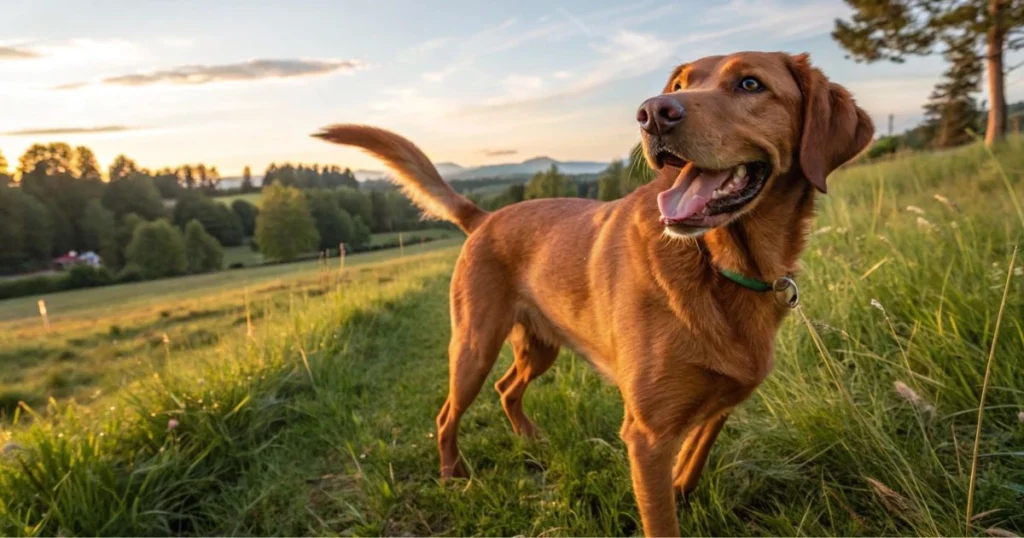
Foods to Avoid
Some foods are downright dangerous for your Red Lab:
- Chocolate and caffeine
- Grapes and raisins
- Onions and garlic
- Alcohol, cooked bones, xylitol (found in gum and some peanut butters)
Keep a list on your fridge for easy access in case of emergencies.
Grooming and Coat Maintenance
Your Red Lab’s striking coat needs regular attention to stay vibrant and healthy.
Managing the Shedding
Yes, Red Labs shed—a lot, especially during season changes. Here’s how you stay on top of it:
- Brush 3–4 times a week with a slicker or de-shedding tool
- Use a grooming glove for quick daily sessions
- Add flaxseed or fish oil to meals to reduce excessive shedding
Bathing Your Red Lab
You don’t need weekly baths—every 4 to 6 weeks is ideal unless they roll in something unpleasant.
Use:
- Mild, hypoallergenic dog shampoo
- Lukewarm water and a soft towel dry
- Blow dryers on a low setting if needed, especially during winter
Regular grooming also lets you inspect for:
- Skin irritations or hot spots
- Ticks and fleas
- Ear wax build-up and odors (signs of infection)
Exercise and Mental Stimulation
Red Labs are athletic and intelligent. Without enough activity, they get bored—and bored Labs get destructive.
Daily Activity Requirements
Keep your dog trained for at least 60-90 minutes daily:
- Two brisk walks
- Fetch, tug-of-war, or off-leash running
- Swimming (Labs love water!)
Brain Games and Enrichment Ideas
Complementary lifestyle factors Physical activity is only one part of the equation. To maximize the benefits, consider the following:
- Puzzle feeders to make meals fun
- Hide-and-seek with toys or treats
- Teaching new tricks weekly
- Rotating chew toys to keep things fresh
For the high-energy type? Consider dog sports like agility, flyball, or dock diving.
Training and Socialization
A well-behaved Red Lab doesn’t happen by accident—it’s the result of patient, consistent training.
Start Early: Puppy Training Basics
Start training around 8 weeks using:
- Positive reinforcement (treats, praise, toys)
- Short, focused sessions (5–10 minutes max)
- Clear commands: sit, stay, come, down, no
House training? Stick to a schedule and reward successes immediately.
Socializing Your Red Lab
Red Labs are naturally friendly, but socialization helps reinforce that:
- Invite people over regularly
- Visit parks, pet-friendly cafes, or pet stores
- Use controlled introductions with other animals
Early exposure builds confidence and prevents fear-based behaviors later.
Health and Vet Care
Routine vet care isn’t optional—it’s essential to keeping your Red Lab in peak condition.
Routine Check-Ups
You should schedule:
- Annual exams for vaccinations and full physicals
- Dental cleanings or at-home brushing
- Monthly flea/tick/heartworm prevention
Spotting Early Signs of Illness
Watch for:
- Sudden weight changes
- Limping or stiffness (especially after exercise)
- Eye or ear discharge
- Appetite or mood changes
When in doubt, call your vet. Early detection can make all the difference.
Creating the Perfect Living Environment
Your Red Lab isn’t picky, but they do need a space where they feel secure and comfortable.
Indoor Safety for Energetic Dogs
Keep hazards out of reach:
- Electrical cords
- Household cleaners
- Small items that could be swallowed
Create a dog zone with:
- Durable toys
- Chew-resistant bedding
- Soft lighting and a quiet corner for rest
Comfortable Sleeping & Resting Areas
Consider:
- Orthopedic dog beds for joint support
- Crate with blankets for a den-like space
- Elevated cooling beds during warmer months
Your pup needs about 12–14 hours of sleep daily to recharge!
Traveling with Your Red Lab
Red Labs are natural adventurers, but safe travel takes planning.
Safe and Stress-Free Travel
For car rides:
- Use a crash-tested crate or harness
- Keep windows up to avoid ear infections or debris
- Never leave your dog alone in the car—heatstroke is real
Packing checklist:
- Collapsible bowl & water
- Food in labeled containers
- Bed or blanket from home
- First-aid kit + vaccination records
Bonus tip: Try calming sprays or anxiety vests if your dog gets nervous during trips.
Conclusion: A Lifetime of Love and Loyalty
Owning a Red Lab means signing up for years of tail wags, muddy paw prints, and heart-melting moments. With the right care, you’re not just giving them a good life—you’re creating a bond that only grows deeper with time.
From feeding and training to cuddly and car ride, all the small efforts you make for your dog create the basis for trust and happiness. And for their part? You get a partner who loves you very much and forever.
Frequently Asked Questions About Red Lab Care

Are Red Labs harder to care for than other Labradors?
Not at all. Red Labs share the same temperament and care requirements as Yellow, Black, and Chocolate Labs. The only difference is their striking coat color.
Are red laboratories difficult to take care of compared to other labraders?
You can start basic commands at the age of 8 weeks. Early socialization and frequent exercise are better listed.
How do I keep my Red Lab’s coat shiny and healthy?
Feed them omega-rich foods, brush regularly, and use gentle, nourishing shampoos during baths.
How do I keep the red laboratory shiny and healthy?
At least once per year for checkups and vaccinations. Older dogs may need twice-yearly visits.
Do Red Labs get along with kids and other pets?
Absolutely. Red Labs are known for being gentle, tolerant, and social—making them great family dogs.
Ready to Raise the Best Red Lab Ever?
Start today. Set a routine. Commit to their care. And never underestimate the joy your Red Lab can bring into your world.
